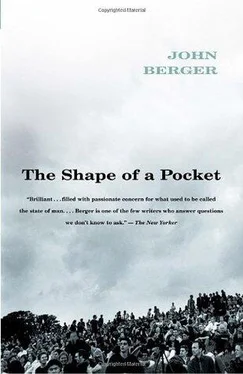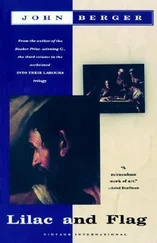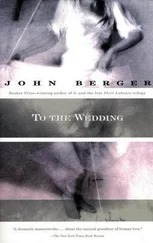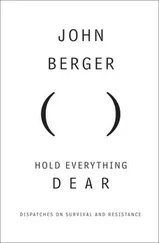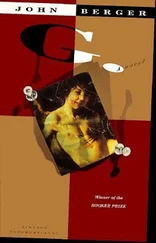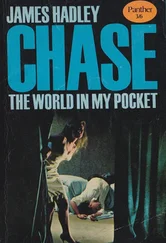True, there are exceptions: self-portraits which do look at us: a Chardin, a Tintoretto, a copy of a Frans Hals self-portrait when he was bankrupt, Turner as a young man, the old Goya as an exile in Bordeaux. Nevertheless, they are few and far between. And so how is it that during the last ten years of his life Rembrandt painted nearly twenty portraits which address us directly?
When you’re trying to do a portrait of somebody else, you look very hard at them, searching to find what is there, trying to trace what has happened to the face. The result (sometimes) may be a kind of likeness, but usually it is a dead one, because the presence of the sitter and the tight focus of observation have inhibited your response. The sitter leaves. And it can then happen that you begin again, referring not any more to a face in front of you, but to the recollected face which is now inside you. You no longer peer; you shut your eyes. You begin to make a portrait of what the sitter has been left behind in your head. And now there is a chance that it will be alive.
Is it possible that Rembrandt did something similar with himself? I believe he used a mirror only at the beginning of each canvas. Then he put a cloth over it, and worked and reworked the canvas until the painting began to correspond to an image of himself which had been left behind after a lifetime. This image was not generalised, it was very specific. Each time he made a portrait he chose what to wear. Each time he was highly aware of how his face, his stance, his appearance had changed. He studied the damage unflinchingly. Yet, at a certain moment, he covered the mirror so that he no longer had to adjust his gaze to his gaze, and then he continued to paint only from what had been left behind inside him. Freed from the double-bind, he was sustained by a vague hope, an intuition, that later it would be others who would look at him with a compassion that he could not allow himself.
Thank you for the painting, Marisa, I’ve put glass over it. Your painted man, and around him the horizons, and beside him the real, not painted, lichen which has resisted drought and every extreme of temperature for millions of years. Primeval lichen, petals, feathers — you keep them between pages and you take one out, like a ticket from a purse, whenever you paint a journey!
Me? I’m standing in the biggest ever Brancusi exhibition. No lichen, no feathers, nothing itches here. Almost everything is polished and pure.
I have the impression, that just after Brancusi’s death in 1957 I visited his studio in the Impasse Ronsin. I was with a friend — perhaps with Zadkine who was also a friend of his. I remember the name BRANCUSI scrawled on the door with a horseshoe hung beside it, the high skylights, the vice on his bench and the sculptures and the famous carved pedestals and the segments of his Column-without-end, all crowded together but never jostling one another — each work platonically arm in arm with its neighbour.
Particularly I remember the benevolent presence of the man who had just been buried in the cemetery of Montparnasse. The studio seemed to me to be like a bakery, the ovens still warm, from which the baker had just walked out to go down to the river.
Yet is this true? Was I really there or have I made it up, my imagination influenced by all the flaring, mysterious photos he took of his studio, or by a visit I made to the reconstructed one which was later opened as a museum?
There’s nobody I can check with today. Yet the doubt is appropriate, for Brancusi had the perplexing gift of being entirely himself and, at the same time, always slipping away. (He was seven years old when he ran away from his home in the Carpathian Mountains the first time.) It’s not birds that I sculpt, he once said, it’s the act of flying.
He dressed like a Russian peasant yet his friend Marcel Duchamp sold Brancusi’s sculptures in the 1920s to avant-garde collectors in the USA, where they were viewed as shining emblems of the modern era.
His first sculpted birds were inspired by the mythical bird of the Romanian forests called the Maïastra. When he came to Paris from Bucharest in 1904 he made most of the journey on foot. Yet his last birds, made in the 1930s, already prophesy the form of the Concorde jet!
When you look at his drawings, they have the air of maps, which is odd for a sculptor. The contours don’t mould forms, they simply mark frontiers which can be crossed. All his work is about leaving. Above all about leaving the earth for the sky, as his Columns-without-end are supposed to do.
And standing here, Marisa, I suddenly want to resist. I think of one of your feathers falling down on to the earth. Maybe I love the imperfect and the flawed too much. I want to find out how to judge the rascal. He’ll remain great, of course, but we ought to know a bit more about his pain.
There’s a work in the show called Sculpture for the Blind. It’s an oval, lying on its side, made of marble, about the size of an ostrich’s egg but not so symmetrical.
Say somebody blind picks it up and starts feeling it, fascinated, with their fingertips. Is this slight ridge the place of a nose? Is this gentle hollow becoming an eye-socket? Can the ripple here be a hair-line? After a while they’ll turn the egg over and start touching it to discover whether there is a crack, as with an Easter egg that opens. And finally they’ll ask themselves a question: Is this thing I’m holding in my hands a container or a core? Is there a head within it, or is it a head coming into being?
Now, this work is one of a long series of horizontal oval heads made between 1910 and 1928. Some he called The Sleeping Muse , others The New Born, The Beginning of the World, First Cry, Prometheus. Obviously Brancusi imagined them as cores not containers.
And he strove for the same thing in all his polished carvings — the birds, the fishes, the princesses. Each time when carving, he wanted to go back, eliminating all imperfections, all wear and tear, to the growing point of the first Creation, to the pure idea as it takes on form. Platonic once more. That he spent months polishing his sculptures was an integral part of that return journey to the pure, to that which existed before gravity and before the Fall.
The preposterous challenge the rascal set himself was to do this using heavy, earthy materials such as marble, bronze and oak. Sometimes he succeeded, sometimes he failed. When he fails the polished form does remain a case, a container, and doesn’t become the core. When he succeeds, the material is utterly transformed by the movement he miraculously gives it. In the case of the big, flat Fish , the marble becomes water.
Nearly all the birds and fishes succeed, as also the oval heads. The penguins, the tortoises, the torsos, Leda, the smart women, fail. They remain containers. At the best like sea shells and at the worst, like custom-built motorbike petrol tanks.
The notorious story of how in 1927 the US customs taxed one of Brancusi’s sculptures because they considered it, not a work of art, but an industrial utensil, is often retold as an example of bureaucratic philistinism. It seems to me that their colossal error was a little understandable, and not quite as stupid as is made out.
I think the old man in his solitude sensed the problem of the containers. And if during his last twenty years he made almost nothing new, it was probably because he realised that he had found all he was likely to find. After all, there are not that many cores, and the infinite multiplicity of feathers, leaves, barks, skins is NOT what interested him.
With one exception. The exception which is his most astonishing invention. The Kiss. He made the first one in 1907 and he went on making others till 1940. This is the most recurring theme in his oeuvre , a counterpart to the bird. All the Kisses are in rough stone. Not one is polished and not one is platonic.
Читать дальше
